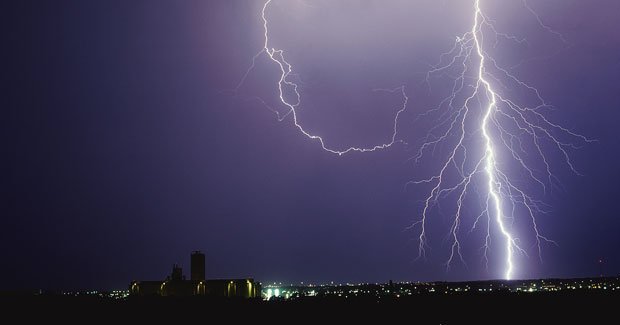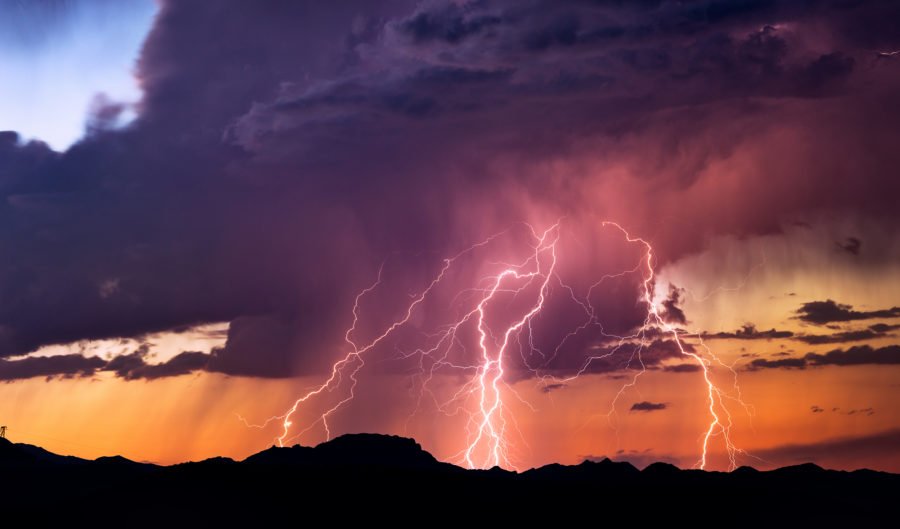What is ball lightning?

Recently I put a call out for eyewitnesses to these mystery balls of fire, and many readers submitted accounts of their own close encounters.
While some of these could be dismissed as aberrations associated with standard lightning strikes, there were several reports that clearly were out of the ordinary. Among the sources for these was Kevin Franklin of Brisbane, who believes he witnessed ball lightning not once but twice.
“The first time was in 2004 when I was standing in my lounge room in Westlake, a south-west suburb of Brisbane,” he recalls.
“I noticed an orange ball starting to form on the road outside. Within seconds it was about 2 feet [0.6m] in diameter.
“It then travelled up my front lawn, through the closed lounge window, across the room, out through another closed window and dissipated on my back lawn,” Kevin says.
Not surprisingly, he was left unnerved by the experience. “Every hair on my body stood on end and I thought I was going to die, although it actually had no adverse effect on me except [for giving me] a terrible fright.”
His second experience wasn’t quite so terrifying. “About 10 years ago a group of us was sitting outside at my broth- er-in-law’s house at Narangba, north of Brisbane, when a large orange ball materialised in the sky and shot towards us at an incredible speed,” he recalls.
“We were sure it was going to hit us, but it disappeared in an instant.”
Of these two accounts, Kevin’s first – the 2004 encounter – is especially captivating to Dr John Lowke, an adjunct research professor at the University of South Australia, who’s been investigating ball lightning phenomena for more than 60 years.
“Kevin describes the formation of a ball,” John says, and explains that “it’s most unusual for anyone to see the start of ball lightning”. John was also interested to hear that the ball travelled through not one but two closed windows.
“Whether ball lightning can pass through glass is currently at the centre of debate,” he says. “One group of Russian scientists believes that ball lightning has a core of ‘matter’ of some sort, which then would make it most unlikely to pass through closed windows.
“Nevertheless, this group believes that the ball lightning matter can melt a very small hole and pass through glass, [which can then] resolidify, leaving almost no trace.”
Some other researchers believe there is no such ‘matter’ at the core of ball lightning and that it’s some sort of electromagnetic phenomenon, such as light or X-rays, which can go through glass. John, however, believes ball lightning is caused by excited oxygen molecules left over after an electrical storm that get swept towards the ground and form into glowing balls.

What John Gamble saw
“The area where my ball lightning sighting occurred was in the NSW Upper Hunter Valley, at Glenbawn Dam, and it was several years ago now. The dam lake starts where the Hunter River flows in from the foothills of the Barrington Tops ranges and finishes at the dam wall, not far from where the camping area is. We always visited in November when summer really starts. Clouds would build up in the ranges and the thunder could be quite deafening at times, with the lightning putting on great displays. Those out on the water watch carefully for the right time to make for land, because the water can get choppy. I’ve been caught out twice and had to find a safe haven. But on this particular day we were watching from a safe spot when a huge thunderclap shook the whole area, followed by a great flash of lightning. I have often seen forked lightning, but this was a distinct ball of fire. It bounced along the surface of the lake, eventually hitting dry ground on the bank and disappearing as if nothing had happened – not a mark on the ground. Think of a wet tennis ball being thrown against a wall with a tail of water following it coloured pale yellowish-orange with splashes of pink.”
Photo credit: Simone De Peak
In his latest research, John concludes that it may be possible to explain ball lightning that’s been ob- served coming through windows in houses or aircraft cockpits in terms of conventional gas theory involving excited (metastable) states of oxygen.
“I used to think that my theory couldn’t explain ball lightning passing through glass, because metastables do not travel through glass,” John says. “But I recently did a calculation indicating that sufficient metastables could be formed from an electric field – for example from a thunderstorm – penetrating to the other side of the glass.”
Although the scientific experts are yet to settle upon an agreed theory, more firsthand observations could certainly help to solve the rarely encountered atmospheric mystery once and for all.
Not all the reports that were brought to the attention of Australian Geographic occurred indoors.
While fishing during a thunderstorm at Glenbawn Dam, 150km by road north-west of Newcastle in New South Wales, John Gamble saw “a ball the size of a small rainwater tank with a tail, like a comet”.
“It skipped along the surface of the dam hitting [the water] about every 400m or so,” he says. “Every time it hit there was a terrific splat that sounded like molten lead hitting a wet surface.
“It eventually hit half in the water and half on dry land and disappeared,” John says. “If I had not seen it with my own eyes, I would have thought it was a figment of an overactive mind.”
John laments he didn’t take a photo or video of his chance sighting. “I was too busy looking at the lightning to worry about a photo,” he says. “But it was something I will never forget.”
Tim the Yowie Man is a naturalist, author, broadcaster and tour guide, Tim has dedicated the past 25 years to documenting Australia’s unusual natural phenomena. He’s written several books, including Haunted and Mysterious Australia (New Holland, 2018).



